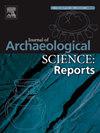Use of osseous materials during the Chalcolithic in Northeastern Bulgaria (based on materials of Polyanitsa tell)
IF 1.5
2区 历史学
0 ARCHAEOLOGY
引用次数: 0
Abstract
Many Chalcolithic cultures of the Balkan-Danube region used antler, animal bones, boar tusks and shells as raw materials for tools, household and votive items, as well as jewelry. The unique collection of such objects found in 1973–1974 during the archaeological study of the Polyanitsa tell (Northeastern Bulgaria), is particularly numerous and diverse (266 items). Experimental and traceological studies of part of this collection made it possible to characterize the manufacturing technology of these products, as well as the functional purpose of many of them. Among the industrial equipment, tools were found that were used in agriculture, processing flint, wood, hides and skins, and ceramics. It should be noted that some flint tools, found at the settlement, were used for processing bone/antler. This fact, as well as finds of blanks and unfinished items made of bone/antler, indicate their local production. The quality and the wide range of products of the bone processing industry serve as proof of the high level of its development and demand for such utensils in the economic and domestic activities of the population of the Chalcolithic sites of Northeastern Bulgaria.
保加利亚东北部旧石器时代骨质材料的使用(根据 Polyanitsa tell 的材料整理)
巴尔干-多瑙河地区的许多旧石器时代文化都使用鹿角、兽骨、野猪獠牙和贝壳作为工具、家居用品、祭品和珠宝的原材料。1973-1974 年,在对 Polyanitsa tell(保加利亚东北部)进行考古研究时发现了一批独特的此类物品,数量特别多,种类也特别丰富(266 件)。通过对部分藏品进行实验和痕迹学研究,可以确定这些产品的制造技术特征以及其中许多产品的功能用途。在工业设备中,发现了用于农业、加工燧石、木材、皮革和陶瓷的工具。值得注意的是,在聚落中发现的一些燧石工具是用来加工骨/燧石的。这一事实,以及发现的骨质/锑勒坯料和未加工物品,都表明它们是当地生产的。骨加工业产品的质量和种类证明了该行业的高度发展以及保加利亚东北部旧石器时代遗址居民在经济和家庭活动中对此类器具的需求。
本文章由计算机程序翻译,如有差异,请以英文原文为准。
求助全文
约1分钟内获得全文
求助全文
来源期刊

Journal of Archaeological Science-Reports
ARCHAEOLOGY-
CiteScore
3.10
自引率
12.50%
发文量
405
期刊介绍:
Journal of Archaeological Science: Reports is aimed at archaeologists and scientists engaged with the application of scientific techniques and methodologies to all areas of archaeology. The journal focuses on the results of the application of scientific methods to archaeological problems and debates. It will provide a forum for reviews and scientific debate of issues in scientific archaeology and their impact in the wider subject. Journal of Archaeological Science: Reports will publish papers of excellent archaeological science, with regional or wider interest. This will include case studies, reviews and short papers where an established scientific technique sheds light on archaeological questions and debates.
 求助内容:
求助内容: 应助结果提醒方式:
应助结果提醒方式:


